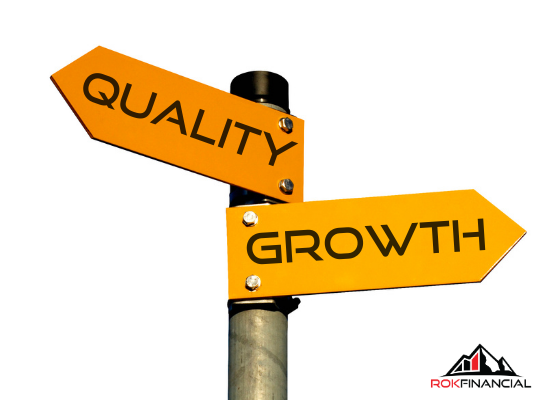For a business to keep growing, they need to pay close attention to what their customers are saying. That said, it can be extremely challenging to know what your clients are thinking. So, how do you listen to your customers and take their insights to improve your business? We’ll cover everything you need to know […]
For a business to keep growing, they need to pay close attention to what their customers are saying. That said, it can be extremely challenging to know what your clients are thinking. So, how do you listen to your customers and take their insights to improve your business?
We’ll cover everything you need to know below.
Request Customer Reviews & Monitor Your Feedback
Customer feedback is information you gather from your clients to determine whether or not they’re satisfied with products or services. It can also be general details about how they feel about your company. Asking for customer feedback is an excellent way to improve your products, measure customer satisfaction, better your customer experience, and more.
Gathering feedback is great, but it’s not going to help unless you do something with the information. Whenever you collect insights from your clients, make sure you monitor each piece of data to use it as a reference in the future.
Email Past Customers or Create a Customer Feedback Survey
The easiest and most popular way to gather customer feedback is with a survey, typically sent out via email. You can easily create surveys online and add whichever questions you deem relevant. However, you shouldn’t go overboard with the questions. Keep it simple and to the point.
It’s also essential that you use open-ended questions whenever possible. If you create multiple-choice questions, you’re filling in the answers, not your clients. Open-ended questions allow your customers to talk freely and give you genuine answers you can use to make your business better.
Get Immediate Feedback When Closing the Sale
Getting feedback right after a purchase is key because it will help streamline your sales process. Right after someone buys something from your company, you could ask them if everything was clear during sign-up or checkout.
That said, never ask for feedback in the middle of a process. It’s better to wait for the right moment, such as when a live chat session ends, after a demo, or after resolving a support ticket.
Why It’s Important To Monitor Customer Feedback
Your customer feedback is vital if you want to make effective changes to your company. However, gathering responses isn’t enough. Once you conduct a survey to see how your clients feel about your products or services, monitor your feedback and make adjustments accordingly.
How To Deal With Negative Feedback
While it may feel natural to feel like your company is flawless and anyone who thinks otherwise is wrong, please understand that negative feedback can be more powerful than positive. However, the way you deal with negative feedback is important.
Here are a few things to try:
- Be sympathetic and understand why your customers feel that way.
- Issue an apology if you feel like your company has made a mistake
- Always address your customer by their first name.
- Stay calm and resolve the issue.
It is always important to respond to your client in a timely manner with a proposal that will make them feel heard and acknowledged. This can make or break your relationship with your customers.
Final Thoughts
Without a doubt, gathering customer feedback can be exciting and intimidating. Make sure you do everything in your power to utilize their input and take action to improve your company’s performance and the relationship you hold with your clients.
We’ll cover everything you need to know below.
Request Customer Reviews & Monitor Your Feedback
Customer feedback is information you gather from your clients to determine whether or not they’re satisfied with products or services. It can also be general details about how they feel about your company. Asking for customer feedback is an excellent way to improve your products, measure customer satisfaction, better your customer experience, and more.
Gathering feedback is great, but it’s not going to help unless you do something with the information. Whenever you collect insights from your clients, make sure you monitor each piece of data to use it as a reference in the future.
Email Past Customers or Create a Customer Feedback Survey
The easiest and most popular way to gather customer feedback is with a survey, typically sent out via email. You can easily create surveys online and add whichever questions you deem relevant. However, you shouldn’t go overboard with the questions. Keep it simple and to the point.
It’s also essential that you use open-ended questions whenever possible. If you create multiple-choice questions, you’re filling in the answers, not your clients. Open-ended questions allow your customers to talk freely and give you genuine answers you can use to make your business better.
Get Immediate Feedback When Closing the Sale
Getting feedback right after a purchase is key because it will help streamline your sales process. Right after someone buys something from your company, you could ask them if everything was clear during sign-up or checkout.
That said, never ask for feedback in the middle of a process. It’s better to wait for the right moment, such as when a live chat session ends, after a demo, or after resolving a support ticket.
Why It’s Important To Monitor Customer Feedback
Your customer feedback is vital if you want to make effective changes to your company. However, gathering responses isn’t enough. Once you conduct a survey to see how your clients feel about your products or services, monitor your feedback and make adjustments accordingly.
How To Deal With Negative Feedback
While it may feel natural to feel like your company is flawless and anyone who thinks otherwise is wrong, please understand that negative feedback can be more powerful than positive. However, the way you deal with negative feedback is important.
Here are a few things to try:
- Be sympathetic and understand why your customers feel that way.
- Issue an apology if you feel like your company has made a mistake
- Always address your customer by their first name.
- Stay calm and resolve the issue.
It is always important to respond to your client in a timely manner with a proposal that will make them feel heard and acknowledged. This can make or break your relationship with your customers.
Value Your Customers’ Opinions
Without a doubt, gathering customer feedback can be exciting and intimidating. Make sure you do everything in your power to utilize their input and take action to improve your company’s performance and the relationship you hold with your clients.













